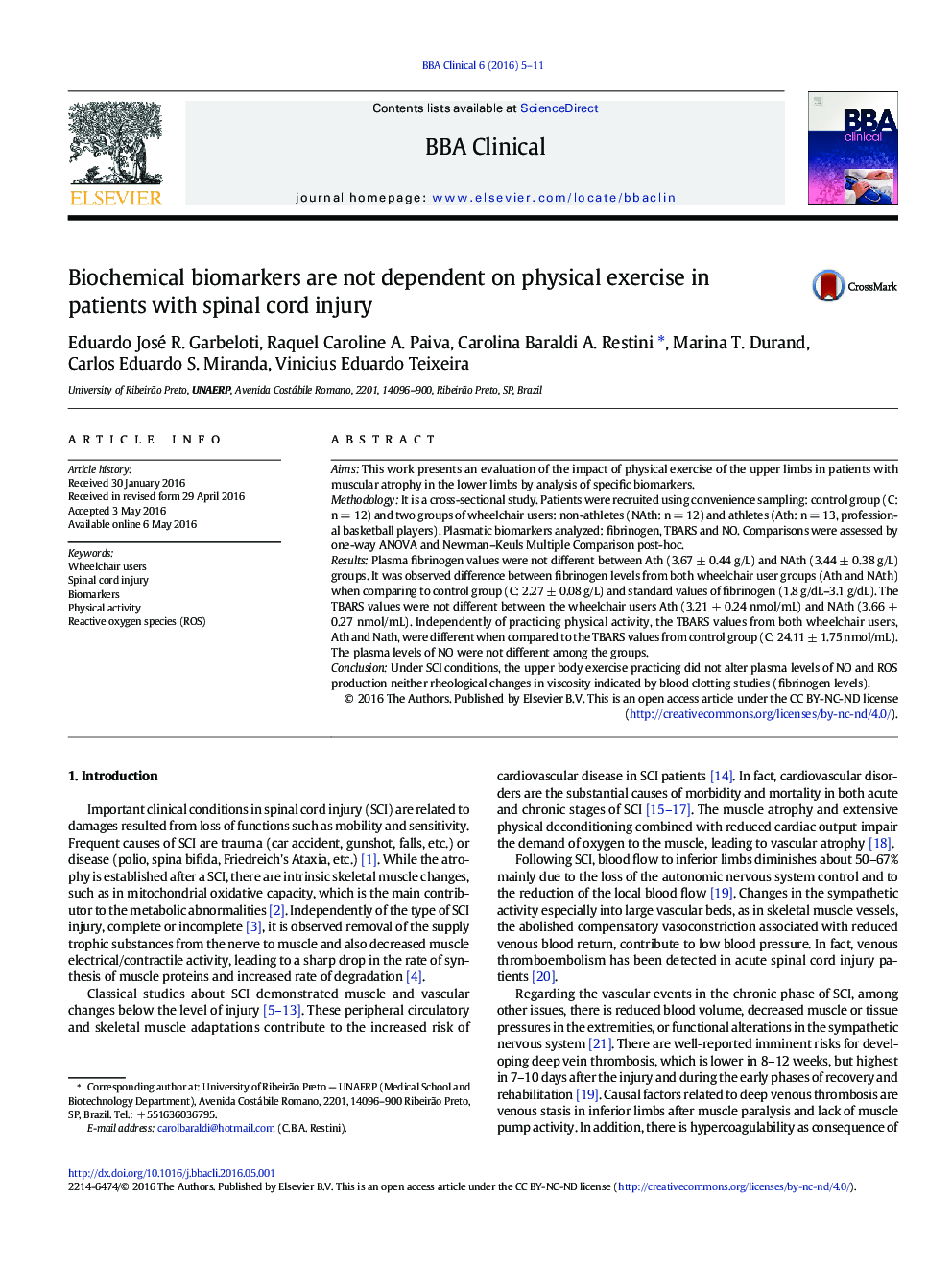| Article ID | Journal | Published Year | Pages | File Type |
|---|---|---|---|---|
| 2773048 | BBA Clinical | 2016 | 7 Pages |
•Lower limb atrophy potentially impairs cardiovascular system in wheelchair users.•Wheelchair users practicing exercises do not present fibrinogen levels changes.•Wheelchair users practicing exercises do not present changes in the NO levels.•Wheelchair users practicing exercises do not present altered ROS production.
AimsThis work presents an evaluation of the impact of physical exercise of the upper limbs in patients with muscular atrophy in the lower limbs by analysis of specific biomarkers.MethodologyIt is a cross-sectional study. Patients were recruited using convenience sampling: control group (C: n = 12) and two groups of wheelchair users: non-athletes (NAth: n = 12) and athletes (Ath: n = 13, professional basketball players). Plasmatic biomarkers analyzed: fibrinogen, TBARS and NO. Comparisons were assessed by one-way ANOVA and Newman–Keuls Multiple Comparison post-hoc.ResultsPlasma fibrinogen values were not different between Ath (3.67 ± 0.44 g/L) and NAth (3.44 ± 0.38 g/L) groups. It was observed difference between fibrinogen levels from both wheelchair user groups (Ath and NAth) when comparing to control group (C: 2.27 ± 0.08 g/L) and standard values of fibrinogen (1.8 g/dL–3.1 g/dL). The TBARS values were not different between the wheelchair users Ath (3.21 ± 0.24 nmol/mL) and NAth (3.66 ± 0.27 nmol/mL). Independently of practicing physical activity, the TBARS values from both wheelchair users, Ath and Nath, were different when compared to the TBARS values from control group (C: 24.11 ± 1.75 nmol/mL). The plasma levels of NO were not different among the groups.ConclusionUnder SCI conditions, the upper body exercise practicing did not alter plasma levels of NO and ROS production neither rheological changes in viscosity indicated by blood clotting studies (fibrinogen levels).
